A student was given a sample of colourless solution containing three cations and was asked to identify the cations. Student carried out a series of reactions as given below.
Precipitates 'A','B' and 'C' are respectively:
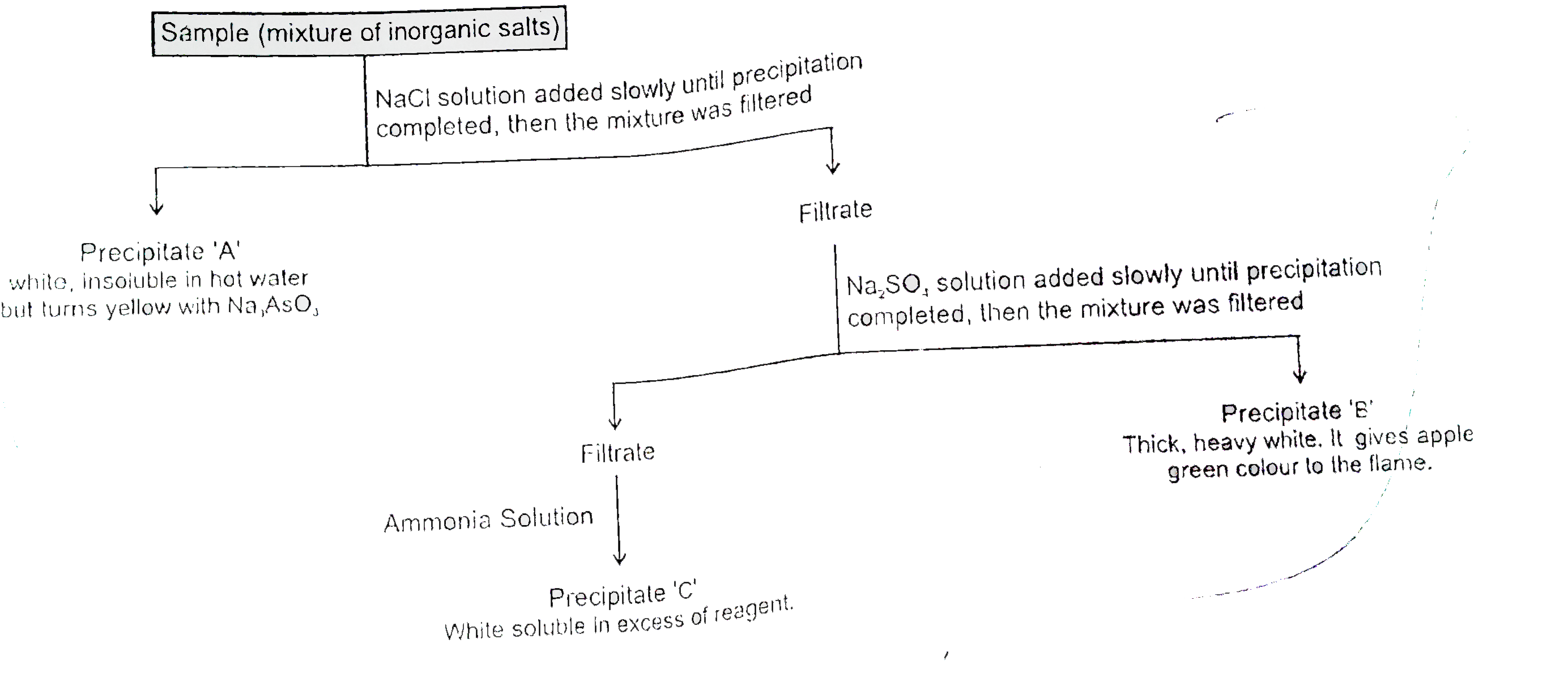
Al(OH)3,BaSO4 and AgCl
AgCl,BaSO4 and Zn(OH)2
AgCl,Ca(OH)2 and ZnSO4
ZnCl2,BaSO4 and Al(OH)3
The correct Answer is:B

Ag++Cl−→AgCl⏐↓(white),3AgCl+Na3AsO3→Ag3AsO3⏐↓(yellow)+3NaCl
Ba2++SO24→BaSO4⏐⏐↓(white),Ba2+salts give apple green colour to the Bunsen flame.
Zn2++2NH3+2H2O→Zn(OH)2⏐⏐↓(white)+2NH4↑⏐⏐
Zn(OH)2⏐⏐↓+4NH4⇔[Zn(NH3)4]2++2OH−
Similar Questions
A student was given a sample of colourless solution containing three cations and was asked to identify the cations. Student carried out a series of reactions as given below.
White precipitate 'A' is not soluble in:
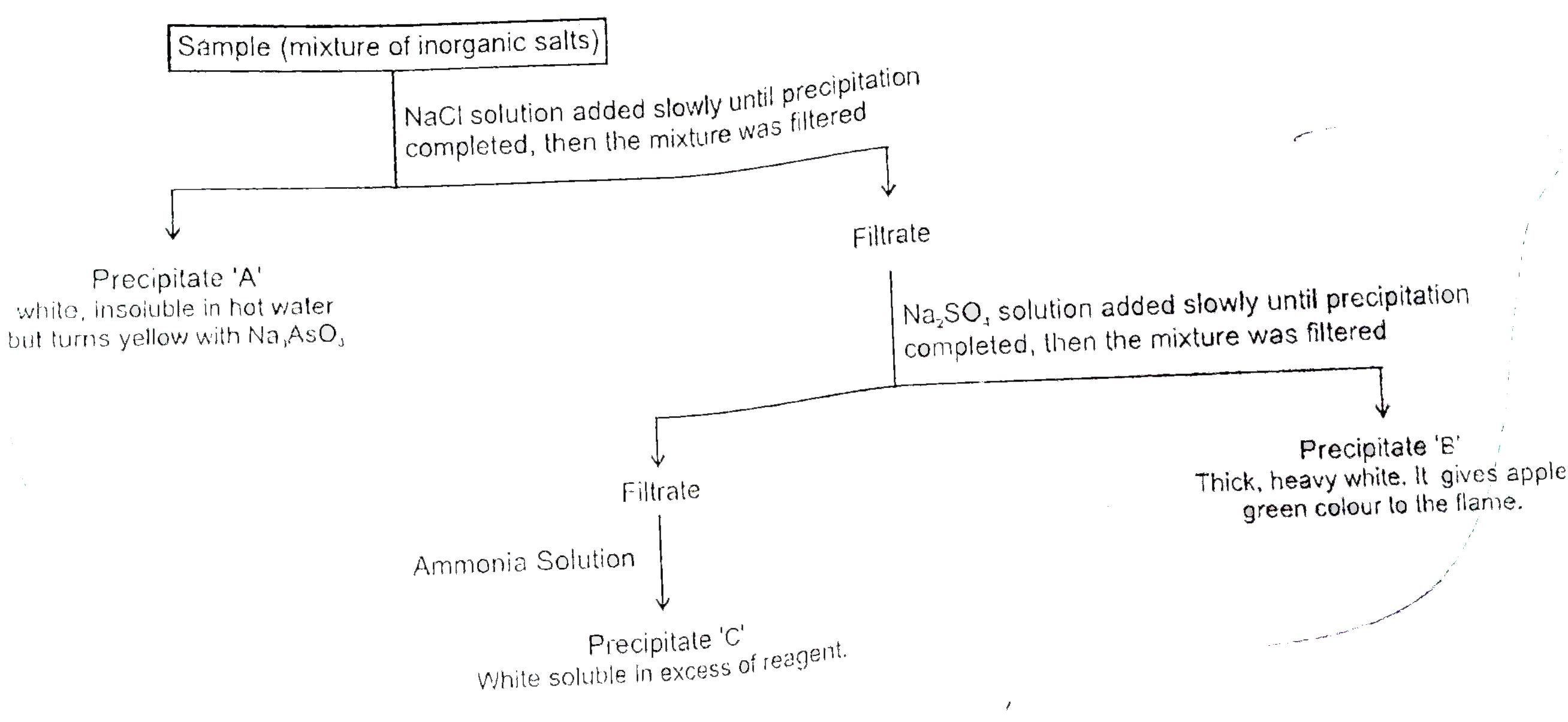
View SolutionGive the products of the reactions given below.
b.
c.
d.
e.
View SolutionStudy the given reaction and identify the process which is carried out.

View SolutionIdentify the compound X on the basis of he reactions given below Also, wrote the name and chemical formulae of A, B and C
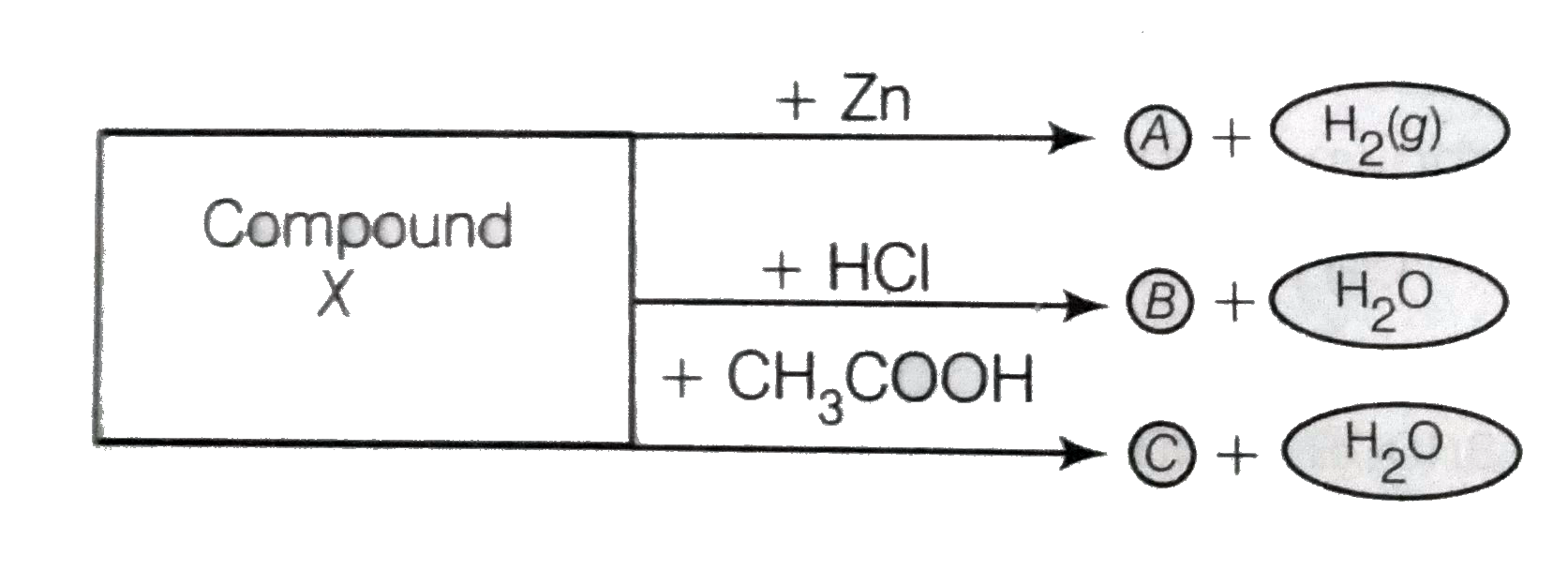
View SolutionIdentify the figures given below marked as A,B,C and D.
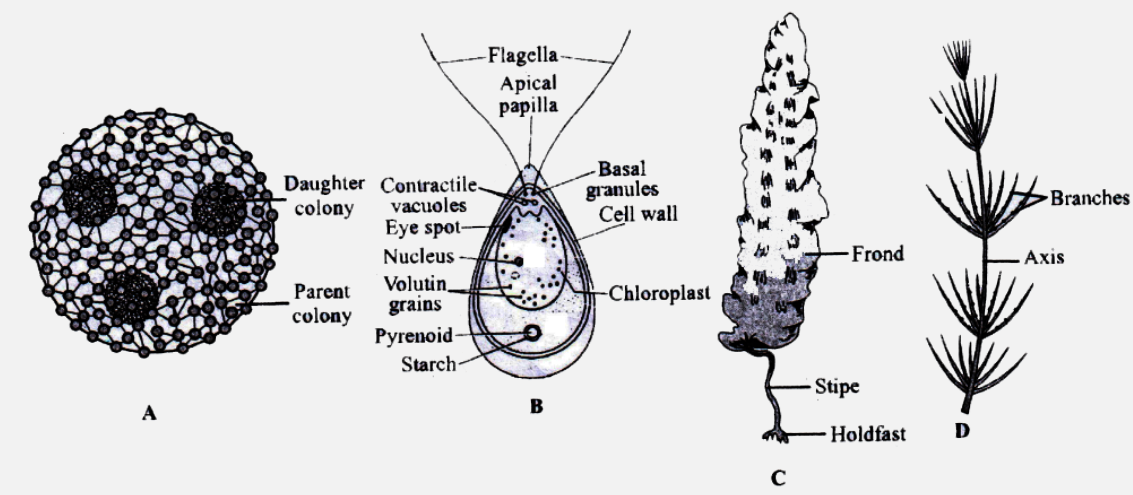
View SolutionA, B and C are three biomolecules . The results of the tests performed on them are given below:
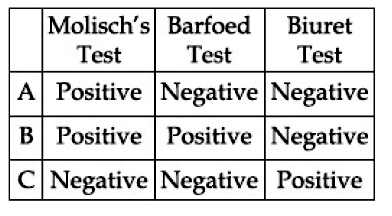
A, B and C are respectively :
View SolutionCertain attributes of innate immunity are given in the table below. Identify A,B,C,D,E and F respectively in it.

View SolutionIn the cubic lattice given below, the three distances between the atoms A−B,A−C, and A−G are, respectively,
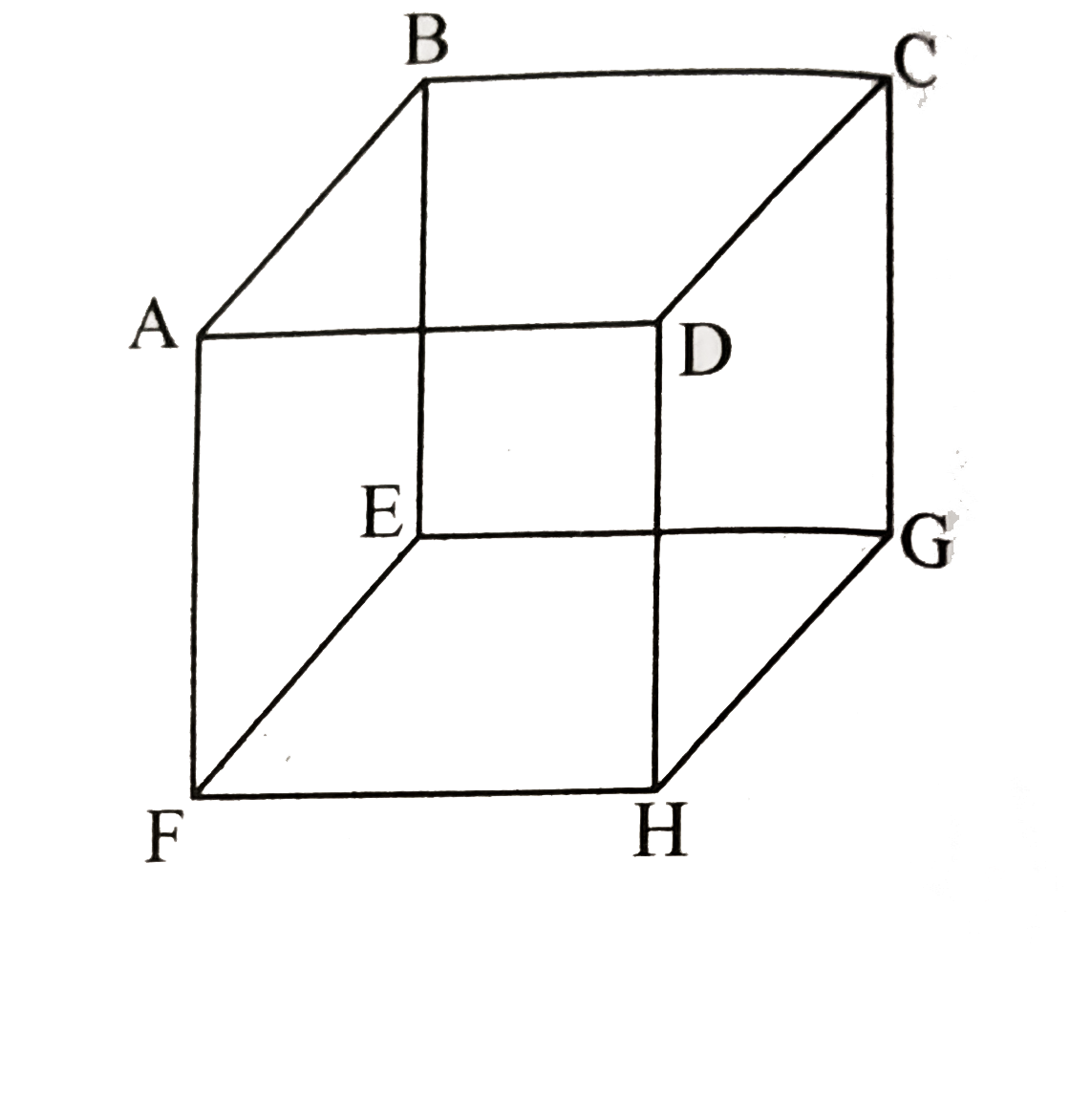
View SolutionIdentify the animals shown in the given figures A , B, C and D from the options given below
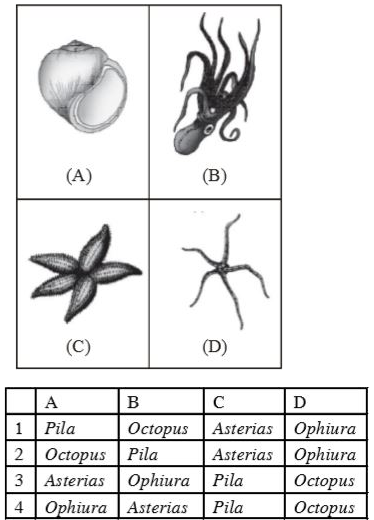
View SolutionA student was given a sample of two tissues. He observes the tissues under the microscope and draws their figures (1 and 2) as shown below .
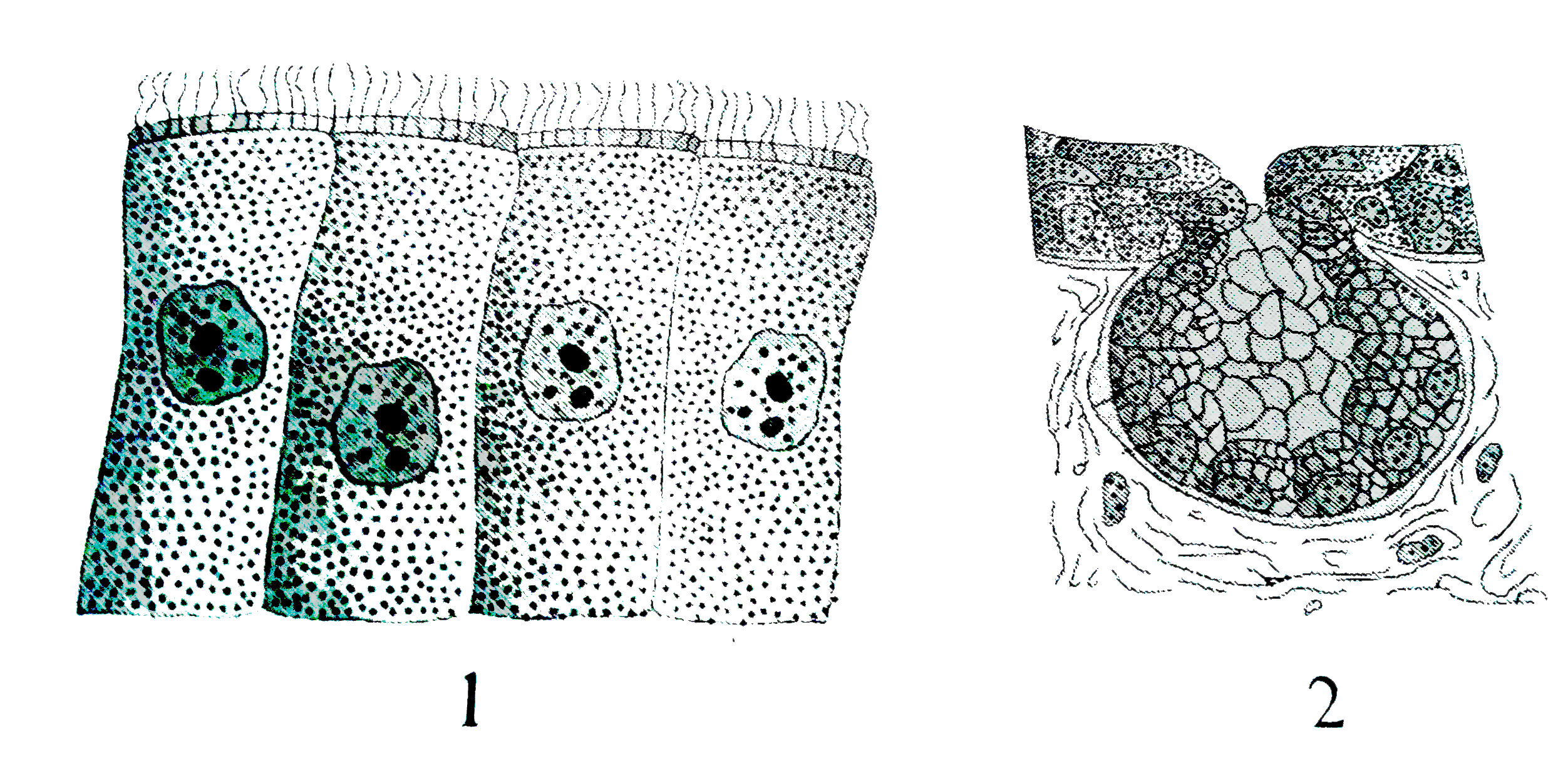
Identify the tissues (1 and 2)
View Solution